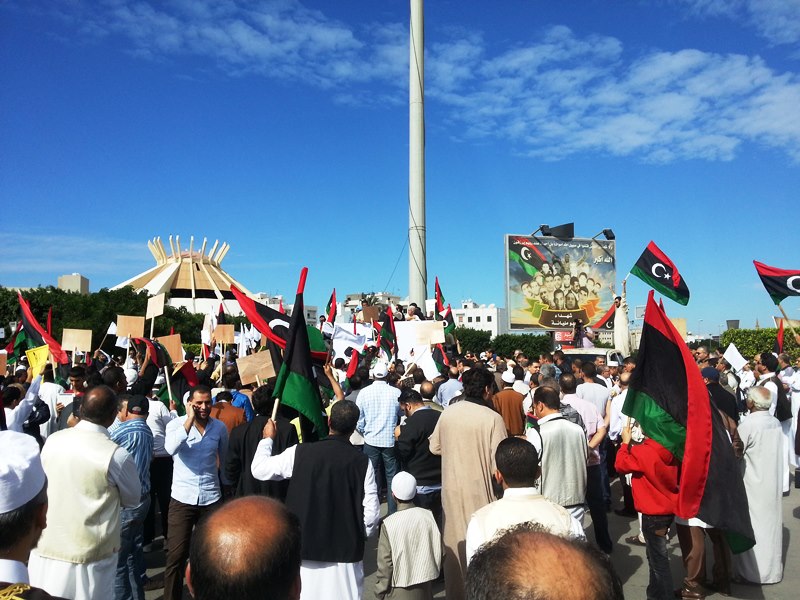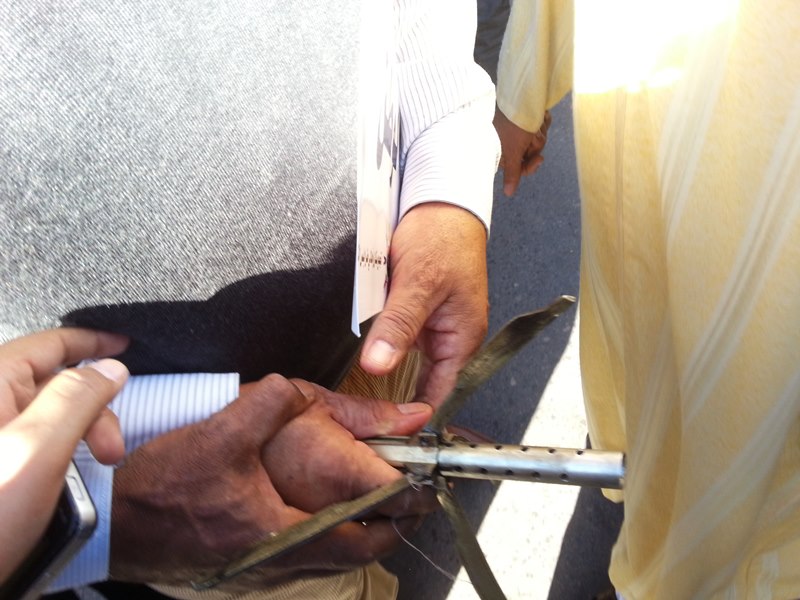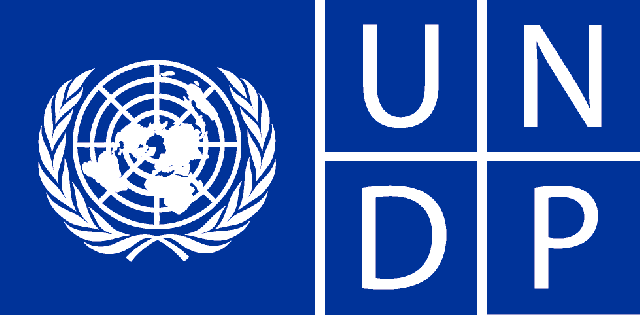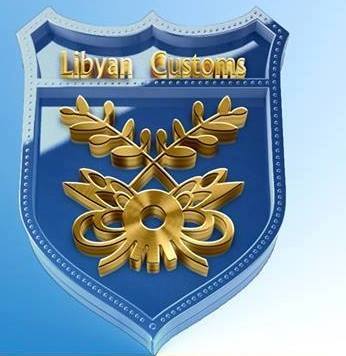By Umar Khan.

Tripoli, 16 November2013:
The Libya Herald asked Umar Khan to cover what always promised to be a highly significant demonstration . . .[restrict]in favour of peace and an end to armed militias. Here is his report.
The joint call to march on Gharghour after Jummah prayer by the Tripoli Local Council (TLC) and local activists was well received. More than 1,500 protestors waited after the prayer in Abu Harida square for others from Fashloum, Ain Zara and Suq Al-Jumah to join them before they could begin their march to evict the brigades from Gharghour. They carried placards and the national flag of Libya. They also brought white flags in large numbers to signal their peaceful intent – something that would later make no difference to the outcome, which would see some 43 dead and more than 460 injured.
The call for a peaceful march came after last week’s deadly clashes which rocked Tripoli. The fighting was triggered by the death of a member of the brigade based in Gharghour, a few days after he was injured during an argument at a checkpoint.
TLC head Sadat Elbadri announced that, with the help of Tripoli residents, the council would implement the GNC law 27 that ordered all unauthorised militias to quit major cities.
The march was planned days ahead with regular meetings between officials, revolutionary commanders and activists. The nightly planning session after Isha prayer at the Al-Nasr mosque in Algeria Square drew big turnouts. The endorsement by the Grand Mufti Sheikh Sadik Al-Ghariani only boosted support among those who object to the presence of outside brigades, holding them responsible for insecurity in the capital.
The call to gather after Jummah prayer in the Abu Harida square in front Al-Quds mosque meant that the majority of demonstrators prayed in the same mosque. The khutba (sermon) was also relevant as the Khateeb (preacher) laid great stress on keeping the march peaceful and the need to evict brigades from the city. After the initial speeches by the organisers, protestors left as soon as a group from Fashloum joined them at the square. As other groups continued to join the marchers, the crowd, which included TLC officials and retired police and army officers, swelled to more than 2,000 before crossing the Bab al Aziziyah roundabout.
The official security presence was limited to just a dozen police cars, which were largely occupied trying to maintain the flow of traffic. This indeed, is the most they did, even after the unarmed protestors came under direct fire. One demonstrator watched an armed policeman in a bullet proof vest sporting a shiny gun and a walkie-talkie. The officer fell back as soon as the firing began. “If all he was going to do was stand around and watch unarmed protestors die, ” said the demonstrator angrily,“he might as well have given the gun to me to protect the others”.
As soon as the front line of protestors carrying white flags, placards and chanting Takbirs (Allahu Akbar) and ‘The people want an army and the police’ approached the main street of Gharghour, members of the Misrata brigade fired bursts from anti-aircraft weapons and Kalashnikovs into the air. This attempt to scare off the crowd didn’t really work. A few tried to take cover behind walls but the continuous chants and slogans to move forward, mobilised the demonstrators once again.
The gun bursts into the air got heavier as the crowd approached the base. As soon as demonstrators entered the main street, members of the brigade lowered their aim and fired straight into the crowd. Of the first five, one was shot in the leg and the others in the chest. Others in the front, including many journalists, tried to retreat and find cover.
The protestors in the back tried to maintain order but the number of injured began to increase and others panicked. Many were retreating, throwing their white flags on the ground. Cars began to ferry away the wounded. Within minutes 15 injured had been taken to hospitals.

It was at this point that three protestors went back? to their vehicles and returned with weapons. They were stopped by TLC officials who, with the help of many others, managed to drag them off the main road. They were beaten by other protestors that felt they had tainted the ‘peaceful march’ by bringing the weapons.
The protestors tried to regroup at the Bab Al-Aziziya roundabout to go in again but the continuous gunfire and increasing number of injuries stopped them. Many protestors that were wearing traditional dress for Jummah prayer left the scene only to return with their weapons. However this time they were wearing casual dress, which happened in some cases to be camouflage uniform. The turning point in this escalation was the killing of a young woman.
As the news spread many people started to arrive with their guns and headed straight for Gharghour. The sight of ordinary people carrying guns and making their way toward a fight brought back memories of 20 August 2011, or the rather smaller yet significant incident of Abu Salim on 15 October 2011.
People who hadn’t brought out their weapons since the fall of Tripoli in 2011 were going in to fight as they believed these brigades have no right to stay in Tripoli after killing innocent and unarmed civilians. One fighter said, “I touched my gun today for the first time after almost two years. The brigades need to understand there is no place for them in Tripoli after killing our people.”
The arguments kept breaking out in groups of civilians and fighters that waited in the Abu Harida square as fighting raged a couple of kilometres down the road. The ambulances continued to ferry away the wounded. A cleric called for patience and self-restraint to which people in the square shouted back” the blood of the martyr, will not flow in vain”.
Emotions were already high but the situation became very tense as a Land Cruiser with a Misratan number plate drove on a sub-street off main 17 February road near the Al-Quds mosque. A few people threw stones at it. The vehicle sped away
The crowd, most of it armed, waited in the Abu Harida square and by the Bab Al-Aziziya roundabout as ambulances kept transferring the injured to the hospitals. Many private cars were also used to move the injured. Their owners were later seen washing the blood away in front of the Al-Quds mosque.
As people sat in groups in the square, with 23mm anti-aircraft shells exploding above their heads, they discussed in shock what had just happened. The peaceful unarmed protestors coming under fire, leaving the scene only to return with weapons and the ensuing fight, which left so many dead and wounded. The general feeling was one of betrayal that, despite having several days to devise a plan to solve the problem in an acceptable way or to efficiently protect the protestors, the local council and the government had failed miserably, even though they had supported the protest march from the very beginning. [/restrict]









